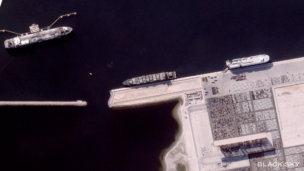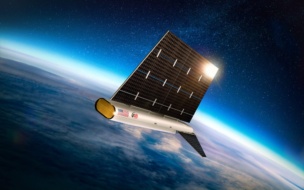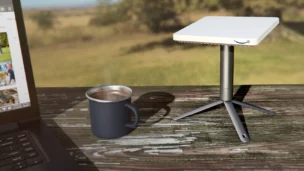Coming soon, Android users practically anywhere around the globe will be able to send green texts messages from anywhere, even when out of range of any terrestrial cell tower.
Iridium and Qualcomm are partnering to make it happen. Today at CES in Las Vegas, Iridium CEO Matt Desch announced that in mid-2023, several new premium smartphones will hit the market equipped with hardware that allows them to tap directly into their satellite network to send SMS and emergency messages when out of range of a cell tower.
“The vision that we’ve talked about for a long time, of Iridium being the perfect network to connect people and things on the move…has been my focus, and I think it’s going to really come to fruition here in an exciting way,” Desch said in a media briefing.
Over the last year or so, Iridium had dropped mysterious references to a major mobile partner in the footnotes of financial statements and on calls with analysts. Cat’s finally out of the bag.

What to watch for
Satellite connectivity is coming to select Android devices running the Snapdragon 8 Gen 2 system-on-a-chip (SoC). These systems combine multiple functions—like a CPU and GPU—on one chip.
According to Francesco Grilli, Qualcomm’s VP of product management, engineers didn’t need to make sweeping changes to the Snapdragon’s structure.
- “With the help of Iridium, Qualcomm has been able to implement this technology in a regular Snapdragon 8 Gen 2 SoC without any hardware changes in the baseband and in the transceiver,” Grilli said. (Side note: Try saying “Snapdragon 8 Gen 2 SoC” three times fast.)
- The only architectural modifications are on the RF front end to allow the phones to transmit data over L-band frequencies.
Qualcomm and Iridium demonstrated the technology on Wednesday in the desert outside Sin City. Grilli fired off a text from a Snapdragon Satellite-enabled smartphone. Within seconds, the text pinged his unmodified smartphone.
Several companies are currently designing phones that use the new Snapdragon technology for release later this year. Grilli said the technology, confined to high-end handsets for now, could eventually be baked into vehicles, smart devices, and more.
Initially, Snapdragon Satellite phones will hit the North American and European markets. Direct-to-cell service will be available anywhere Iridium is licensed to operate. Support for other markets should come down the road.
The revenue structure
Through this partnership, Iridium will receive a combination of royalties; development and support costs; and payments when users send messages through the service. The companies didn’t share specific pricing information.
Connecting the world
The surface area of the planet within range of a cell tower is actually remarkably low. About 85% of the Earth’s surface is not served by any mobile network, Iridium reports. The US alone has some 500,000 square miles of cellular dead zones. Globally, 15% of mobile users are disconnected from a terrestrial cell tower at any given time, Lynk research has shown.
About Qualcomm…The fabless chip design giant is the “undisputed leader…in smartphone technology,” per Desch’s telling. That’s tough to argue—Qualcomm has 71% market share in the premium tier of Android smartphones. It’s a major supplier of chip designs for brands like Samsung and Motorola.
Assessing the competition
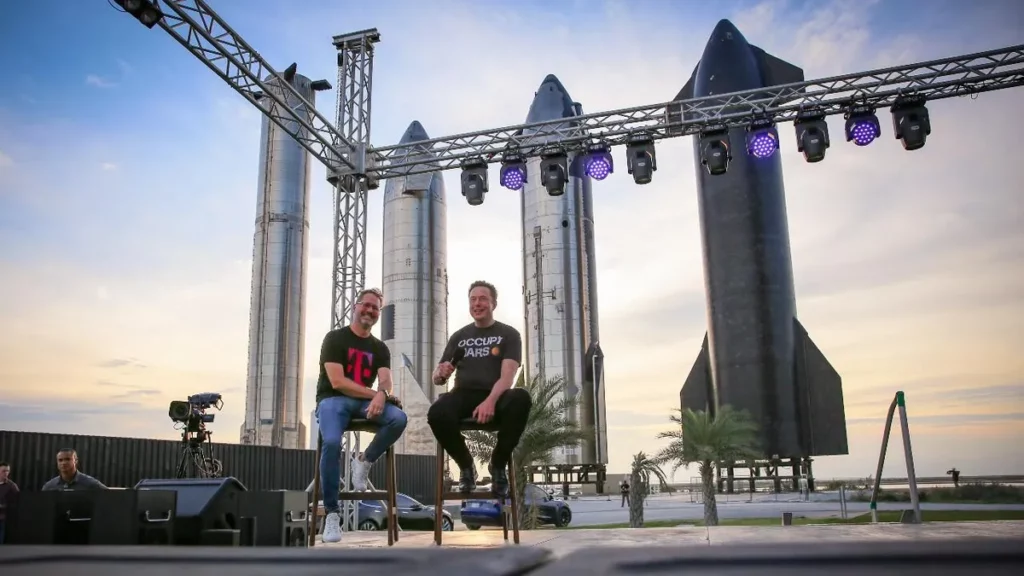
Direct-to-cell connectivity has been a hot-button topic over the past year. In February, Lynk achieved two-way communication between its satellites and unmodified smartphones on three continents. In August, SpaceX and T-Mobile announced a similar collaboration using Starlink. AT&T is exploring the capability with AST SpaceMobile ($ASTS).
Apple has also announced that it’s planning to add satellite-enabled SOS messaging in the next iPhone through Globalstar, and over in China, telco giant Huawei is rolling out its own version of the technology.
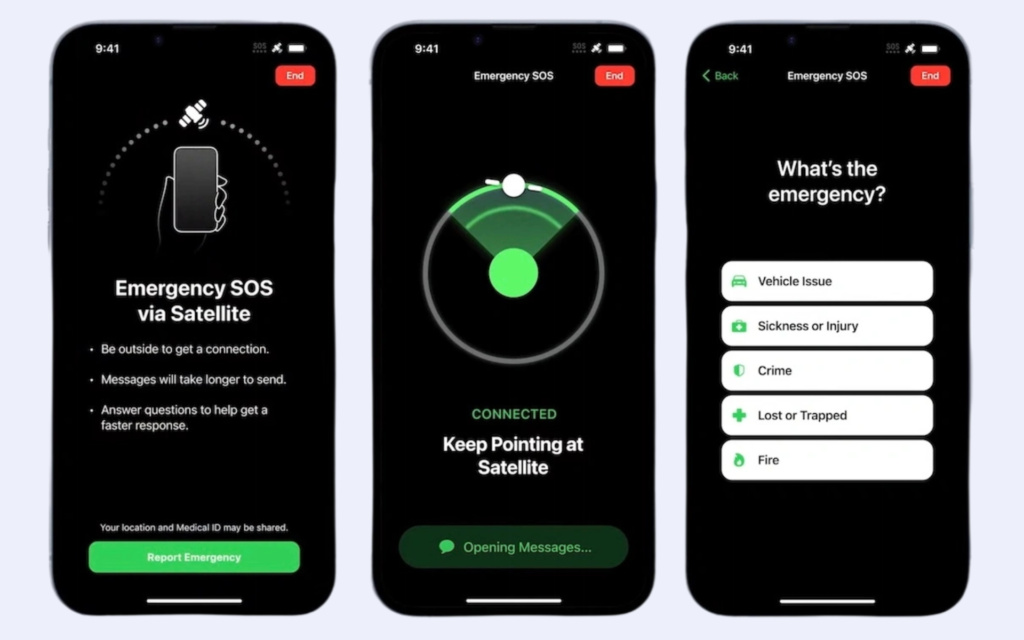
Desch isn’t concerned with the competition in the direct-to-cell space. “I don’t believe in a zero-sum game,” he said. “There’s lots of good ways that you are going to be able to connect to people where they are. This is the only real one, or one of the very few real ones right now. And for the next couple of years, I think we’ll have a big head start.”
- For further reading on Iridium’s “specialty broadband” wedge and how it’s been preparing for this moment for years, check out our lengthy 2022 interview with @IridiumBoss.
Another factor that could work in Iridium and Qualcomm’s favor? The regulatory issue with securing rights to transmit data between satellites and unmodified smartphones, Grilli said. In the US, for instance, broadband providers will need to secure commercial partnerships and FCC licenses to launch direct-to-cell service from unmodified smartphones. Iridium and Qualcomm’s approach doesn’t require any additional licensing, the companies say.
On Iridium’s end…Desch says the service won’t be a burden on its network. “Even broadly used, this is a blip on our constellation capacity. It really is a small percentage.” Iridium doesn’t expect its foray into smartphones to impact existing customers, and it’s already planned expansions to its network in the coming years to increase capacity and accommodate the tens (and eventually hundreds) of millions of smartphones that will sport a Snapdragon Satellite chip.

